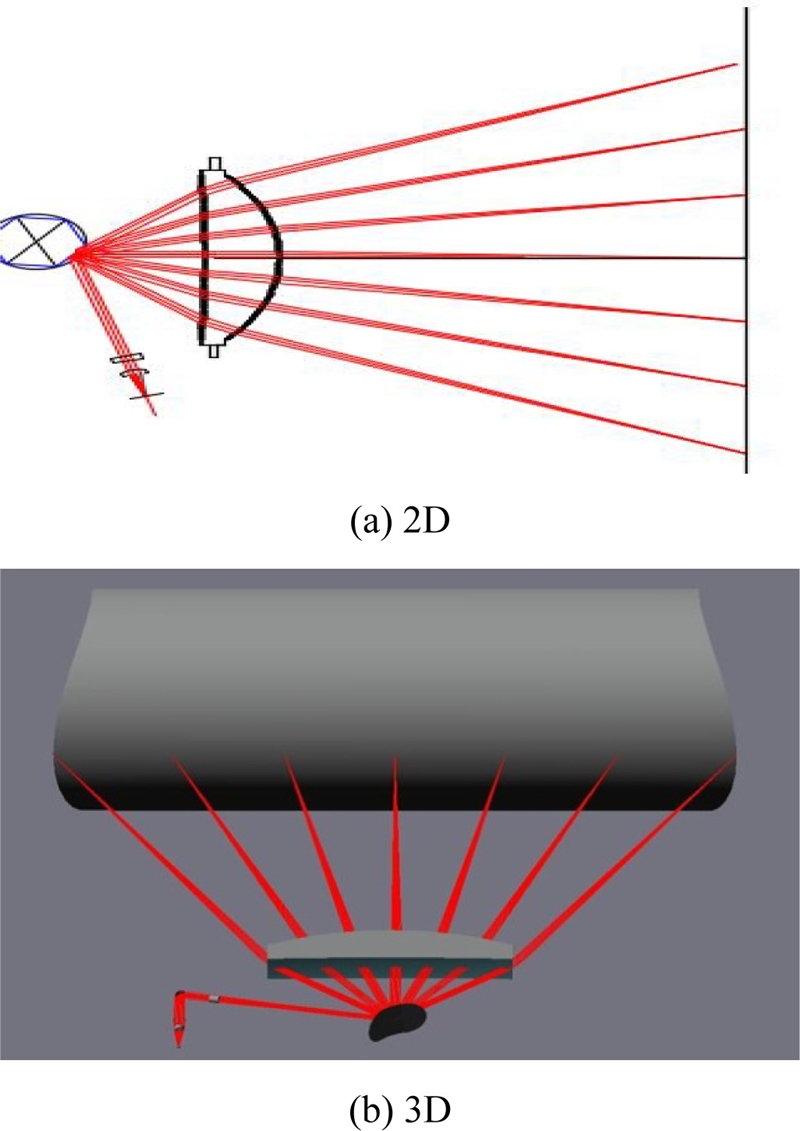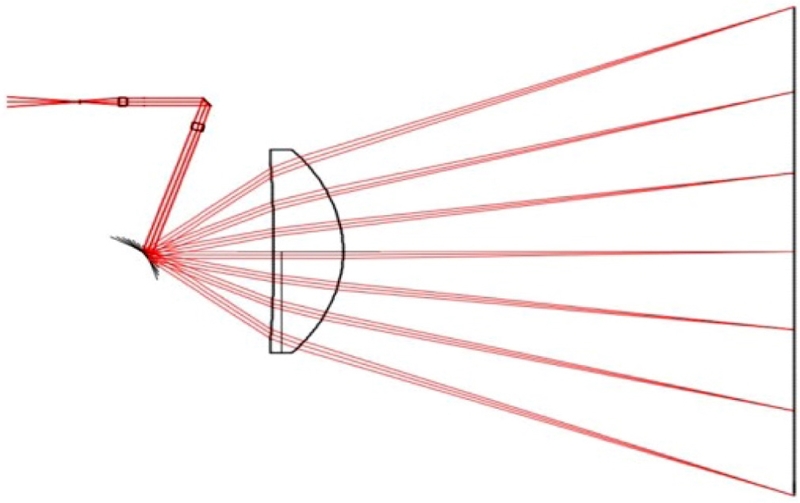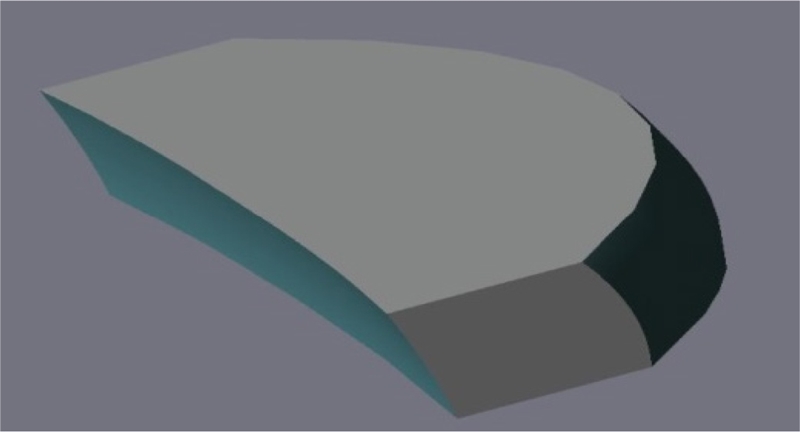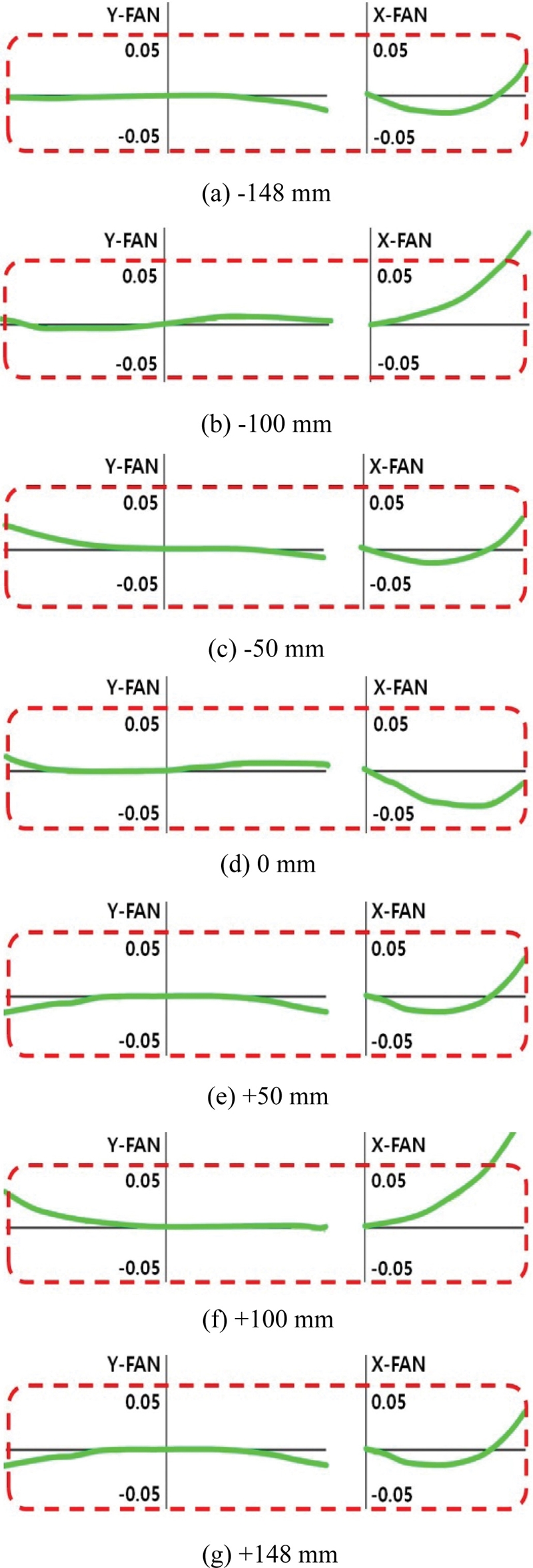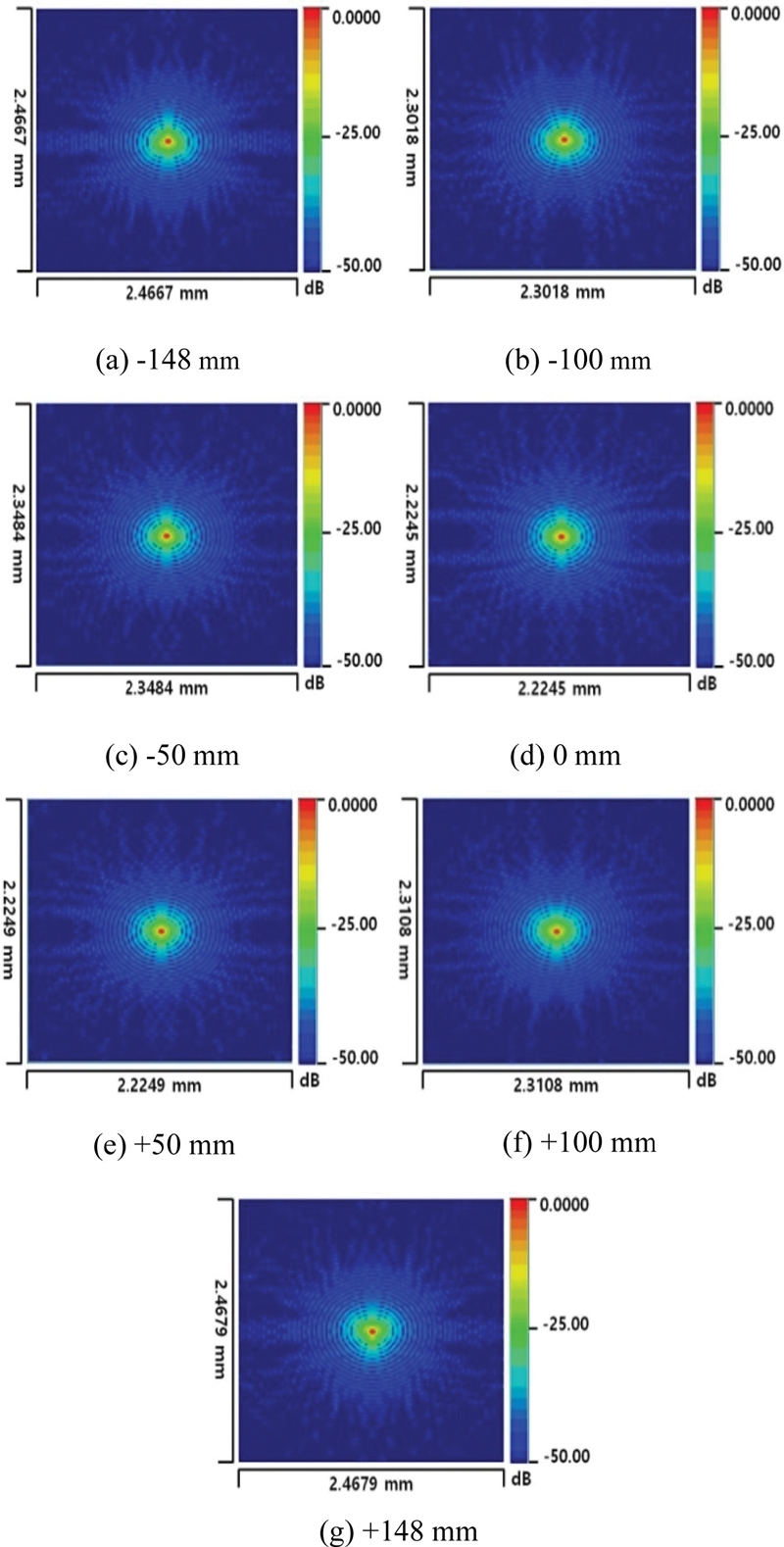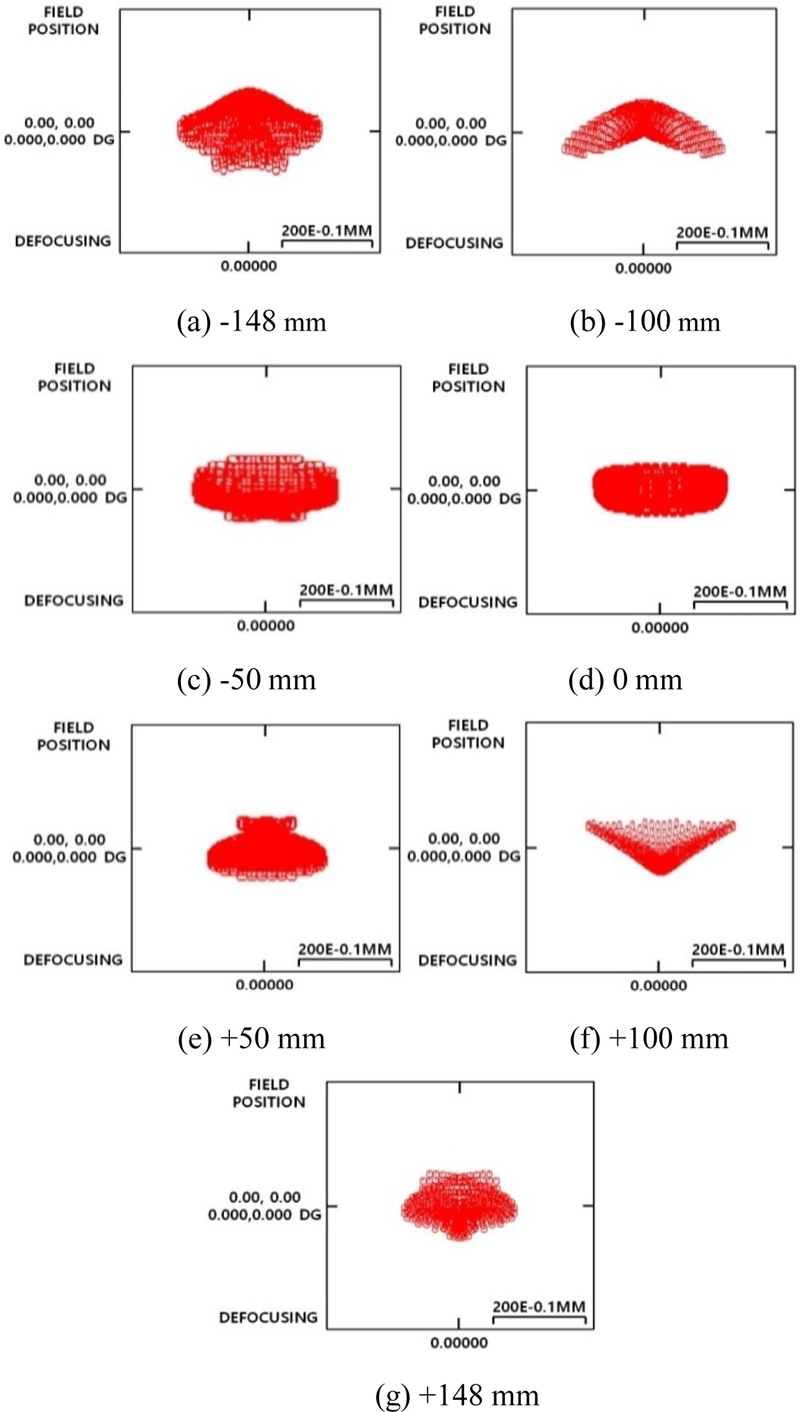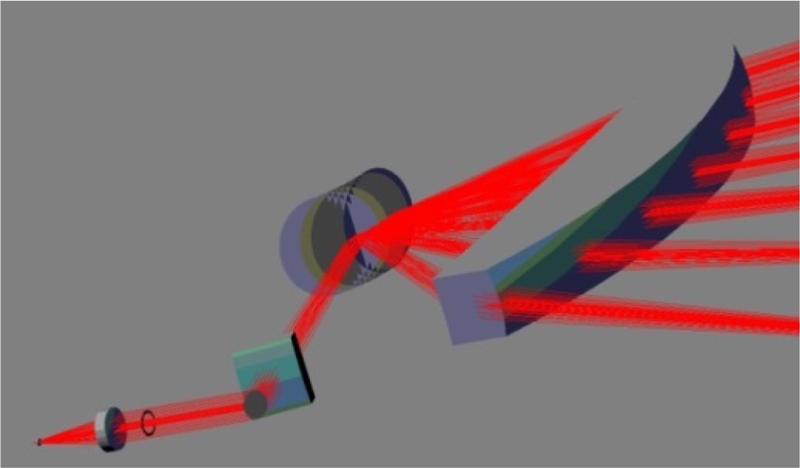
A Study on the Design and Simulation of a 600 dpi Master F-Theta Lens
Copyright © The Korean Society for Precision Engineering
This is an Open-Access article distributed under the terms of the Creative Commons Attribution Non-Commercial License (http://creativecommons.org/licenses/by-nc/3.0) which permits unrestricted non-commercial use, distribution, and reproduction in any medium, provided the original work is properly cited.
Abstract
This study is about the design and simulation of an f-theta lens, one of the main components used in laser printers and laser scanning systems. To design an f-theta lens, the optical paths of the components of the laser scanning unit, the f-theta lens, the cylinder lens, and the collimator lens must be identified. Simulations were performed on the performance of aspherical and beam size optical systems while considering the f-theta lens optical design and optical properties. And while considering the optical design and optical characteristics of the f-theta lens, simulation was conducted on the performance of the optical system for aspherical surface and ray aberrations by location, point spread function, spot diameter, and beam size. Optical system simulation was implemented by applying the collimator lens, polygon mirror, and cylinder lens to the design formula of an f-theta lens using the Code-V and design verification was performed with these results.
Keywords:
Laser scanning unit, F-Theta lens, Aspherical surface, Beam size키워드:
레이저 스캐닝 유닛, 에프세타 렌즈, 비구면, 빔 사이즈1. Introduction
The laser multifunction device transfers the digital signal of the computer to the laser scanning unit and converts the digital data into light information. The core components of the laser scanning unit include an f-theta lens, a polygon mirror, a cylinder lens, a collimator lens, a laser diode, a laser control circuit board and a case. The most important task of the laser scanning unit is to transmit the light dot emitted from the laser diode to the drum via an accurate optical path. A collimator lens is used to prevent scattering of the diffused beam coming out of the laser diode and to make it a parallel beam. Then, the light coming out of the cylinder lens is combined with the parallel beam coming out of the collimator and delivered to the polygon mirror surface where it is reflected to the f-theta lens. The f-theta lens is called such because it spreads the beam on to the drum according to the value of tangent of the polygon mirror angular focal length f. Thus, the f-theta lens is one of the most important parts of the laser scanning unit. Therefore, numerous researchers have worked on improving the performance and characteristics of this key component. These include; Nor et al. has conducted a study on system design for laser scanning unit using A3,1 You et al. has conducted a study on injection molding of a laser scanning unit optical system,2 Robert E et al. has conducted a research on optical scanning research,3 Park et al. has conducted a study on numerical analysis for the injection molding of an aspheric lens for a photo pick-up device,4 Rim’s conducted a study on the effect analysis of birefringence of plastic f-theta lens on the beam diameter,5 Sakuma’s conducted a study on aspherical surface in the laser writing optics,6 Carmina et al. has conducted a study on athermalization of a single-component lens with diffractive optics,7 Kazuo et al. has conducted a study on historical review and future trends of scanning optical systems for laser beam printers,8 and Donald et al. has conducted a study on diffractive optics(Design, Fabrication, and Test).9 Research on this important topic is ongoing. In the presented work, we have studied the design and simulation of a master f-theta lens as a pre-stage of injection molding for mass production of f-theta lenses.
2. Optical Design
2.1 Optical Design of Laser Scanning Unit
Fig. 1 shows the configuration of the laser scanning unit system. The polarity of the data that has passed through the laser scanning unit is inverted unto the surface of the photosensitive drum (Opc Drum) by the corona discharge phenomenon and is combined with the polarity of the toner. Fig. 1 describes the mechanism by which optical data is transmitted by the laser scanning unit to the roller on which the toner is deposited to form characters and pictures that are then transferred to the paper by polar attraction. Finally, these are printed using a heated roller.
Table 1 summarizes the basic specifications for designing a laser scanning unit. Fig. 2(a) shows the 2D design and designed positions in the laser scanning unit of the f-theta lens, cylinder lens, collimator lens, polygon mirror, laser diode, etc. Fig. 2(b) shows the system plan of the laser scanning unit in 3D using the Code-V optical design software. The beam emitted from the laser diode passes through each lens and the beam size appears on the image plane. As a result, it is possible to know which beam of the f-theta lens passes through each location. Through such a simulation, it is possible to uncover the problems in a specific portion of the f-theta lens. The optical design data presented in Table 2 was derived based on these optical equations.
Eqs. (1) and (2) show the optical equation of the aspherical lens. F is an optical design value of the incident surface, K is a material (Topas or Zeonex) constant, and A, B, C, D are aspherical coefficients of the lens in the direction of the shareholder. After calculating the value of the entrance surface F, the optical design value of the exit surface can be represented as Z. From these equations, K = 467.5639, A = -1.44508 × 10-7, B = -5.51473× 10-12, C = 3.51711 × 10-14, and D = -9.93642 × 10-18 can be calculated.
| (1) |
| (2) |
2.2 Optical Design of F-Theta Lens
The design of the optical system of the laser scanning unit is mainly aimed at increasing the design flexibility by improving the light focusing ability for high resolution applications and allowing the use of various lens materials with high processing characteristics. The f-theta lens was designed to increase the workability based on the design and verification data of the optical system under consideration. Table 3 shows the specifications of the f-theta lens. Fig. 3 shows a 2D drawing of the aspheric coefficient of the f-theta lens design using the Code-V optical design software. Eqs. (1) and (2) is an aspherical optical design equation. Where R1Y (Incident Surface) = Ytoric, R1Y = -1195.109605323, R1X = -66.939041504, R2Y (Exit Surface) = Xtoric, Add R2Y = -70.655168579, R2X = -18.063663928, Using this data, we have designed the f-theta lens shown in Fig. 4.
3. Optical Simulation and Discussion
3.1 Simulation of Laser Scanning Unit
For the design of the optical system of the laser scanning unit, the layout containing the f-theta lens, cylinder lens, collimator lens, polygon mirror, and laser diode was set according to the specifications for 600 dpi output. Here, a standard for simulating a laser scanning unit system by implementing 2D and 3D shapes in the Code-V optical software was established. The beam aberration of the laser scanning unit was injected at 785 nm and the height expressed in the range of -148 to +148 mm was confirmed. The laser scanning unit's laser diode was designed so that the size of the beam passing through the cylinder lens and collimator lens was spread out to the f-theta lens via the polygon mirror.
Fig. 5 shows the 3D model of the effective surface of the f-theta lens designed using the Code-V optical design software. Table 4 shows the optical values of the effective surface of the designed f-theta lens.
Beam tracing was performed in each section with the beam size represented by the spot diameter. While doing this, the shape of the actual beam passing through the imaging plane was simulated, and the optical system of the laser scanning unit was verified. Using this process we were able to know the parts of the f-theta lens through which the beam would pass. Fig. 6 shows the beam aberration of the laser scanning unit injected at 785 nm and expressed for each position (-148 to +148 mm). Fig. 7 shows the point spread function of the beam size. The aim of this research is to design the beam so that each section has a constant size. Using this process we are able to determine the parts of the f-theta lens through which the beam has passed. This is necessary to determine the problems in a specific part of the f-theta lens and the verify of the optical design data of the laser scanning unit using the optical tolerance simulation.
3.2 Simulation of F-Theta Lens
The design of the optical system of the laser scanning unit is an important factor in increasing the performance of the system by increasing its degree of freedom through the improvement of its light condensing ability for high resolution using various lens materials with high processing characteristics.
The optical system was designed with the aim of increasing its workability. The f-theta lens was designed based on the verification data. Optical designs of the 2D and 3D shapes of the aspheric coefficients for the 600 dpi f-theta lens were implemented using the Code-V software and the entrance and exit surfaces were implemented using an aspheric optical design function. The designed f-theta lens was simulated in the range from -2 to +2 mm from the focal plane, separately for the main beam and sub beam directions from the image plane. Fig. 8 shows the spot size of the beam. Verification of the design of the optical system of the laser scanning unit was performed through ray tracing for each section, where the actual beam verified the passing shape on the image plane. Fig. 9 shows the verification of the optical design data of the laser scanning unit using the optical tolerance simulation.
Fig. 10 shows the depth of focus of the f-theta lens imaging plane in the sub-scanning direction with respect to each beam. The simulation generated good results in the range from -2 to +2 mm.
4. Conclusion
In this study, we confirmed the optical characteristics of the f-theta lens by designing and simulating the 600 dpi master f-theta lens of the laser scanning unit. Based on this data we fabricated the master f-theta lens and verified the performance of the optical system.
(1) The design data of the optical system of the laser scanning unit was converted into a light beam and the discrimination between -148 and +148 mm was simulated and the optical path difference was confirmed to be good.
(2) The point spread function of the optical system of the laser scanning unit and the beam size are shown in the figure and the beam size is checked from -148 to +148 mm to confirm whether or not the required shape and size appear.
(3) The beam size of the laser scanning optical system was confirmed using simulated ray tracing of the section and the shape of the beam passing through the imaging plane. It was found to form the shape of a point in the range from -148 to +148 mm.
(4) Based on the design data of the optical system of the laser scanning unit, the position of the focal point on the imaging plane of the master f-theta lens was verified in the sub-scanning direction with the beams from -2 to +2 mm.
Acknowledgments
This work was supported by the grant No. 2019R1A5A8083201 from the Regional Leading Research Center of NRF and MOCIE.
References
- Noh, M. J., Hyun, D. H., Chang, H. S., Park, Y. W., and Park, C. Y., “System Design for Laser Scanning Unit using A3,” Journal of the Korean Society of Manufacturing Technology Engineers, Vol. 11, No. 4, pp. 71-72, 2011.
- Yoo, K. S., Hyun, D. H., Chang, H. S., Park, Y. W., and Park, C. Y., “Injection Molding of a Laser Scanning Unit Optical System, Journal of the Korean Society of Manufacturing Technology Engineers, Vol. 11, No. 4, pp. 102-103, 2011.
- Gerald, F., Marshall., and Glenn, E., “Handbook of Optical and Laser Scanning,” CRC Press, 2nd Ed., 2012.
- Park, K. and Han, C. Y., “Numerical Analysis for the Injection Molding of an Aspheric Lens for a Photo Pick-Up Device,” Journal-Korean Society of Precision Engineering, Vol. 21, No. 11, pp. 163-170, 2004.
- Rim, C., “The Effect Analysis of Birefringence of Plastic F Lens on the Beam Diameter, Journal of Optical Society of Korea, Vol. 11, No. 2, pp. 73-79, 2000.
- Sakuma, N., “Two-Lens fθ Lens,” US Patent, 4770517A, 1988.
-
Londono, C., Plummer, W. T., and Clark, P. P., “Athermalization of a Single-Component Lens with Diffractive Optics,” Applied Optics, Vol. 32, No. 13, pp. 2295-2302, 1993.
[https://doi.org/10.1364/AO.32.002295]

-
Minoura, K., “Historical Review and Future Trends of Scanning Optical Systems for Laser-Beam Printers,” Proc. of the Recording Systems: High-Resolution Cameras and Recording Devices and Laser Scanning and Recording Systems on International Society for Optics and Photonics, pp. 264-273, 1993.
[https://doi.org/10.1117/12.165201]

-
O'Shea, D. C., Suleski, T. J., Kathman, A. D., and Prather, D. W., “Diffractive Optics: Design, Fabrication, and Test,” SPIE Press Book, 2004.
[https://doi.org/10.1117/3.527861]

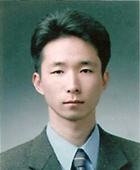
Yong-Woo Park is a graduate school student in the Department of Convergence Mechanical Engineering of Gyeongsang National University, Korea. His research interests are mechanical system design, laser scanning unit design and simulation, and so on.
E-mail: soltek31@naver.com

Jae-Ung Cho is a professor in the Division of Mechanical & Automotive Engineering of Kongju National University, Korea. He is interested in the areas of fracture mechanics (Dynamic impact), composite material, fatigue and strength evaluation, and so on.
E-mail: jucho@kongju.ac.kr

Sung-Ki Lyu is a professor in the School of Mechanical & Aerospace Engineering of Gyeongsang National University, Korea. His research interests are gear, gearbox, and mechanical system design.
E-mail: sklyu@gnu.ac.kr



